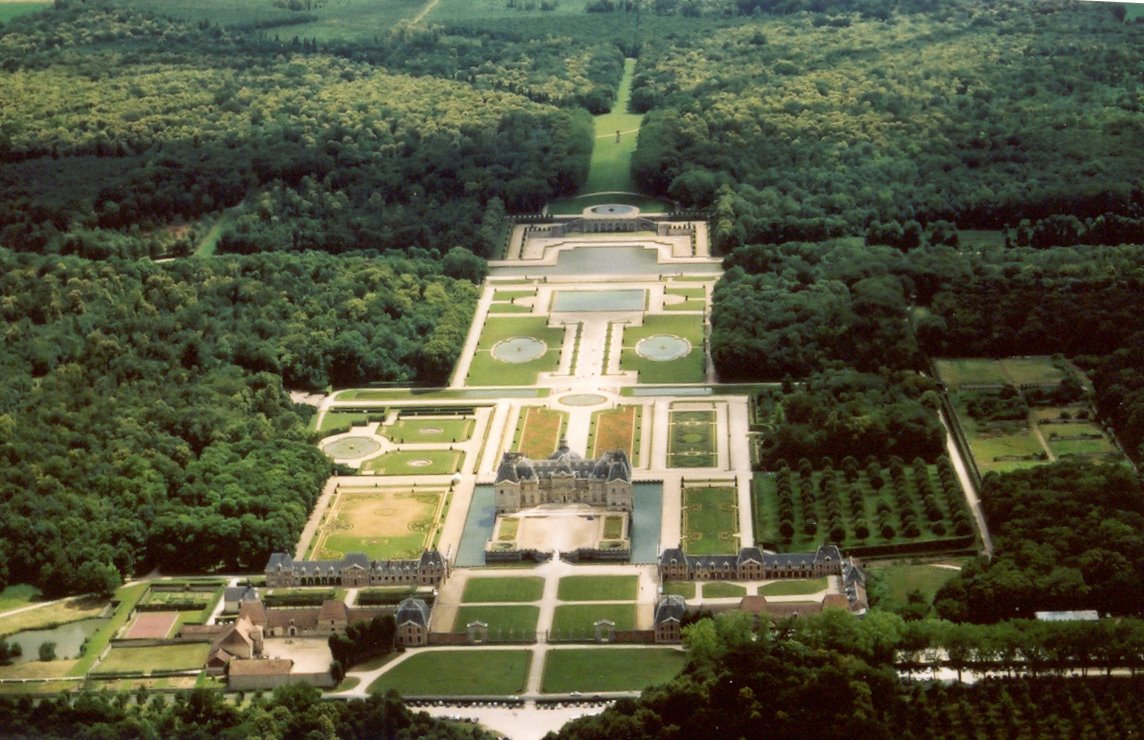To understand the Chateau de Vaux-le-Vicomte, one must first be acquainted with what a typical French chateau entails. The French chateau is the equivalent to the Italian villa, a country house that offered a respite from the stressful city life. Ownership of such an estate would indicate an obscene amount of wealth at the time. Inspired by the medieval castle, the typical chateau would contain towers and moats, but would later be discarded to address the classical principals. Symmetry and correct use of orders were of great importance; despite being noticeably different from the Italian models, they still applied an excess of surface decoration.
Chateau de Vaux-le-Vicomte
Maincy, France
1656-61
Architect: Louis Le Vau
Interior designer: Charles Le Brun
Landscape architect: Andre Le Notre
Patron: Nicolas Fouquet
The Chateau de Vaux-le-Vicomte is considered the most complete ensemble of architecture, painting, sculpture, and landscape design from the French Baroque and was the precursor for the building of Versailles. Located in Maincy, France, it is just southeast of Paris and close to the royal domain of Fontainebleau in the hopes of drawing the king's company. The wet moat surrounding the structure highlights the bright limestone and makes it appear as if it is floating.
The collaboration between the architect, interior designer, and landscape architect marked the beginning of the "Louis XIV style". In order to span 500 hectares, Nicolas Fouquet had to purchase and demolish three villages (if buying a massive chateau wasn't enough already). He was nice enough to allow the displaced villagers to work in his new estate as maintenance. While Fouquet's intentions to draw the king to his home were noble, the lavishness of the place enabled his enemies to lead the king to believe that the money acquired to purchase the land and structures were appropriated through public funds. He was arrested shortly after.
In elevation, the chateau is perfectly symmetrical with its main entrance facing north. Also, the interior plan is also nearly symmetrical. The chateau was originally planned to be constructed from brick and stone, but since the middle class started catching onto the trend, the wealthy started using just stone.
Sources:
Baroque and Rococo Art and Architecture by Robert Neuman
http://en.wikipedia.org/wiki/Vaux-le-Vicomte
http://www.vaux-le-vicomte.com/en/discover-the-domain




No comments:
Post a Comment